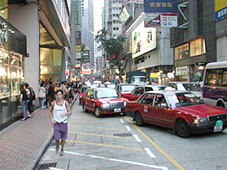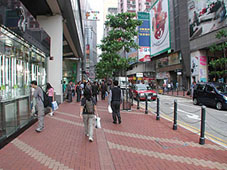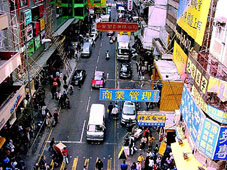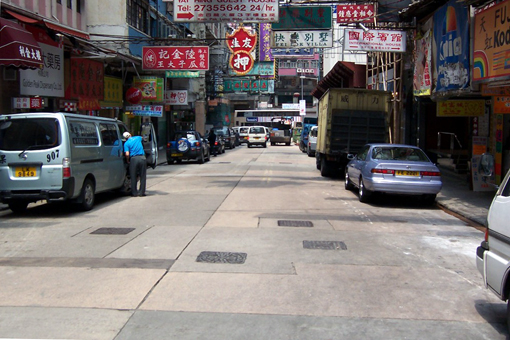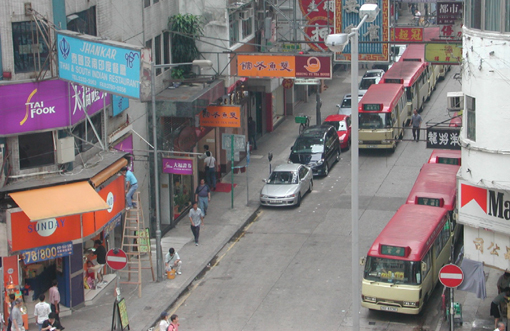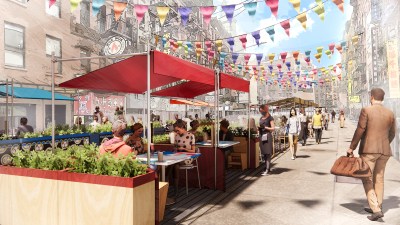Learning From a Streets Renaissance in Hong Kong
If New York or other large cities are looking for a solution to congestion and its negative impact on the economy, Hong Kong offers an excellent strategy and success story. I was there a few weeks back working on waterfront issues (that rival New York City for unrealized opportunities), and was struck by changes that have taken place since my previous visit five years earlier. In 2001, there were few streets or districts that were comfortable to walk in or engage with despite being known as a bustling shopping city. In the intervening time the city has undergone a major transformation led by non other than the city’s Transport Department.
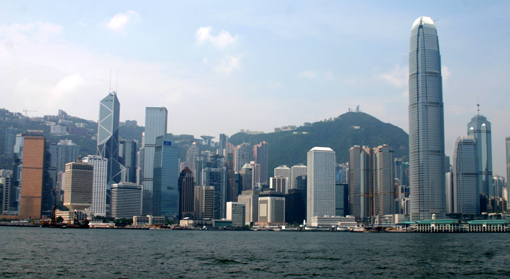
With perhaps the densest downtown in the world, Hong Kong is meeting its livability goals and addressing its congestion problems by strategically reclaiming streets as public spaces.
Hong Kong, even more than New York, is a city run by and for business interests, and its buildings, streets and public spaces have increasingly reflected this dominance. It is exactly this imbalance that makes it all the more impressive and relevant to New York City that the Hong Kong Transport Department has in the last few years seized the initiative to make its congested streets more pedestrian-friendly.

A high vehicle demand street in the Causeway Bay district of Hong Kong has not only been narrowed with various traffic calming measures, but it is completely closed to cars evenings and weekends.
In each of ten central districts the city has chosen to do a combination of traffic calming and permanent and part-time street closings. For instance, in the Causeway Bay area, the city has transformed a district of isolated, internally focused shopping centers into a unified shopping district with the streets as the main focus.
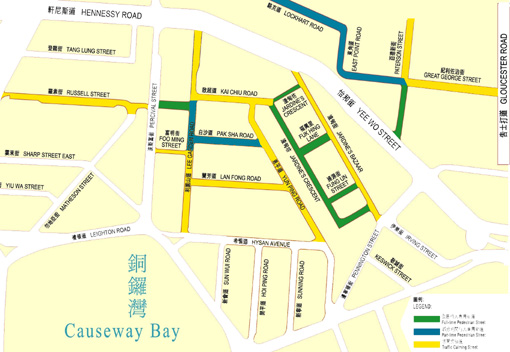
Green signifies full-time pedestrian streets, blue part-time and Yellow traffic calmed.
One of the commercial shopping centers is even called Times Square, highlighting the point that similar improvements could easily be made in New York City’s Times Square. Closing streets in Times Square at specific times, like when the theaters get out, would be a boon for the district on many levels.
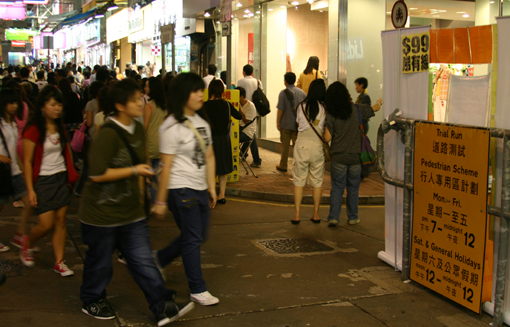
A temporary street closing is on a "Trial Run" near Hong Kong’s Times Square shopping center.
Hong Kong thinks of itself as Asia’s capital city, just as New York City sees itself as the primary city of North America. In recent years Hong Kong’s centrality has been threatened by increasing congestion and diminishing quality of life. Businesses and workforce talent have been threatening to move to the Chinese mainland and other Asian cites like Singapore, Taipei, Shanghai and Tokyo. In response to that threat, Hong Kong is choosing to squeeze the private automobile out of its downtown.
A city that once had almost no space for walking and where tourists, business travelers and residents dreaded its transportation system now has speedy and efficient mass transit and nice public spaces.

Double-decker trolleys and buses carry the bulk of trips on Hong Kong’s streets.
 The streets still carry an extraordinary amount of capacity but it mostly consists of buses, trolleys and taxis. Hong Kong also improves on our Metro Cards with its Octopus Cards that do not even need to be swiped, but can just be briefly held over the turnstile. Like the Metro Card, the Octopus Cards have boosted ridership, efficiency and pride in the city’s transport system.
The streets still carry an extraordinary amount of capacity but it mostly consists of buses, trolleys and taxis. Hong Kong also improves on our Metro Cards with its Octopus Cards that do not even need to be swiped, but can just be briefly held over the turnstile. Like the Metro Card, the Octopus Cards have boosted ridership, efficiency and pride in the city’s transport system.
Hong Kong is not a city that New York has historically looked to for inspriation, but this global commerce capital is creatively addressing many of the same challenges that New York City currently faces. I personally would not be an advocate of permanently pedestrianizing all that many streets in New York but closing streets temporarily in shopping areas during lunch hours, evenings and weekends would certainly work in Soho, Chinatown and a number of other selected spots. Why aren’t we trying it out?
Traffic Calming and removing parking in many of the areas where we are trying to encourage walking, shopping, and better quality of life would also make a ton of sense. I’m sure the folks in Hong Kong said it could never be done. Well, they’re doing it. And it’s working.
Here are some before and after images from Hong Kong:
